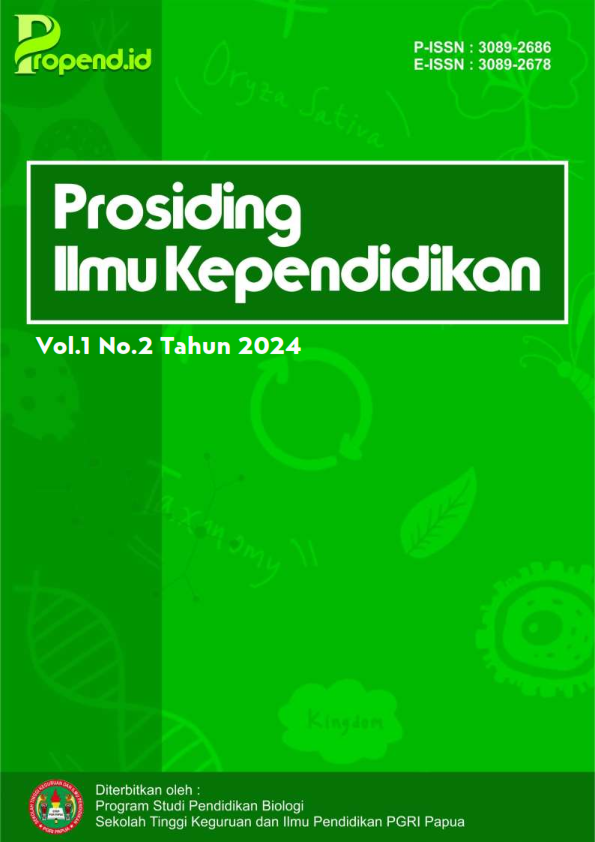Studi Literatur Identifikasi Keanekaragaman lumut (Bryophyta) dan perannya di Ekosistem
Keywords:
Identification of moss (Bryophyta) diversity and its role in ecosystems, Ecological role, Moss habitatAbstract
This research aims to identify the diversity of mosses (Bryophyta) and their roles in ecosystems through a literature review method. The study gathered data from various sources, including scientific journals and related articles, to analyze the composition of moss species found in various habitats across Indonesia. The research findings indicate that moss diversity varies greatly, with the number of identified species ranging from 10 to 45 species in different locations, such as forests, national parks, and urban environments. Mosses play a crucial role in maintaining soil moisture, controlling erosion, and serving as indicators of environmental health. Furthermore, the presence of mosses supports biodiversity by providing habitats for microorganisms and other species. This research also highlights the impact of human activities on the existence of mosses and the importance of conservation efforts to protect their habitats. Therefore, this study provides new insights into the importance of mosses in ecosystems and encourages further research to understand their interactions with other ecosystem components.
References
Ahmad, M., Supriyadi, B., & Siti, A. (2018). Studi keanekaragaman lumut (Bryophyta) di kawasan hutan Desa Taupe. Jurnal Pendidikan Biologi, 9(1), 87-93.
Chapin, F. S., III, Matson, P. A., & Mooney, H. A. (2011). Principles of terrestrial ecosystem ecology. New York: Springer.
Gembong, T. (1998). Taksonomi umum. Yogyakarta: Gajah Mada University Press.
Glime, J. (2006). Bryophyte ecology. Ebook sponsored: Michigan Technological University.
Hasanuddin, & Mulyadi. (2004). Botani tumbuhan rendah. Banda Aceh: Syiah Kuala University Press.
Mubarokah, Z., Savitri, E. S., & Ahmad, M. (2020). Indeks keanekaragaman Shannon-Weiner pada komunitas lumut terestrial di Sumber Suceng.
Najmi Indah. (2009). Taksonomi tumbuhan tingkat rendah (Scyzophyta, Thallophyta, Bryophyta, Pteridophyta). Jawa Barat: Fakultas MIPA IKIP PGRI.
Nuroh Bawaihaty, dkk. (2014). Keanekaragaman jenis lumut di Taman Hutan Raya Sesaot Kabupaten Lombok Barat, Provinsi Nusa Tenggara Barat. Jurnal Sains, 2(2).
Nuroho, B., Supriyadi, B., & Hadi, T. (2014). Keanekaragaman dan peran ekologi Bryophyta di Hutan Sesaot Lombok, Nusa Tenggara Barat. Jurnal Silvikultur Tropika, 5(1).
Rosalia, M. C. (2011). Keanekaragaman tumbuhan lumut (Bryophyta) hubungannya dengan kondisi lingkungan di Gua Semeluh, Gunung Kidul Yogyakarta. Jurnal Biodiversitas, 3(2).
Rusdiyanto, A., & Rahmadi, A. H. (2018). Keanekaragaman lumut di kawasan cagar alam Dungus Iwul, Jasinga, Jawa Barat.
Satiyem. (2010). Keanekaragaman tumbuhan lumut (Bryophyta) pada berbagai ketinggian hubungannya dengan kondisi lingkungan di wilayah lereng selatan Gunung Merapi pasca erupsi. Jurnal Eksperimen, 12(3).
Uji, & Windadri. (2007). Keanekaragaman lumut di kawasan cagar alam Kakenauwe dan suaka margasatwa Lambusango, Sulawesi Tenggara.
Windadri, F. I., & Susan, D. (2009). Keragaman lumut di Resort Karang Ranjang, Taman Nasional Ujung Kulon, Banten.
Windadri, F. I., & Susan, D. (2013). Keanekaragaman jenis lumut di Kepulauan Raja Ampat, Papua Barat. Jurnal Buletin Kebun Raya, 16(2).





